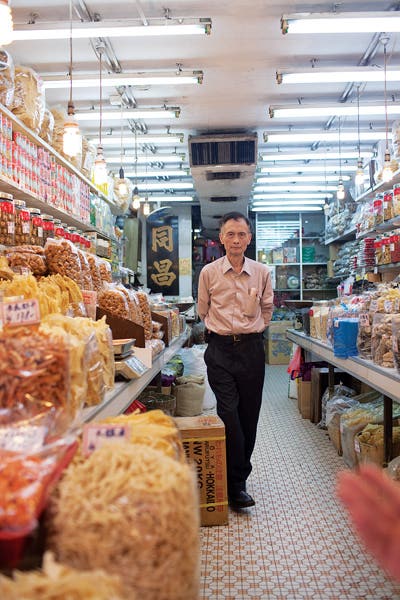
Specialty Trade
Whenever I visit Hong Kong, I find myself wandering away from the crowded shopping districts and toward Des Voeux Road West, also called Dried Seafood Street. This street and every alleyway along it are lined with shops and stalls packed with dried seafood, an essential ingredient in Chinese cooking. There are bags of tiny, orange shrimp, tangles of delicate whitebait, stacks of iridescent red mullet with yellow stripes down their backs. Shark fins, two and three feet tall, are arrayed in glass cases like toy boat sails. Most of the ingredients on offer—like scallops, which are often soaked and added to fried rice, or the shrimp, which are stir-fried with vegetables—are valued for their concentrated flavor. Others—shark fins, sea cucumbers, and fish maws (swim bladders)—are prized for their high collagen content, which gives soups a lush, thick texture. One recent afternoon, I wandered into a narrow store, where the proprietor, an elderly man in an elegant dress shirt, introduced himself as Lee Ping (left) and told me that he'd been in the dried-seafood business for 50 years. He showed off his extraordinary selection of fish maws, holding up specimens from South America, the Indian Ocean, and Africa's Lake Victoria, some worth more than $1,300 a pound. He probably knew I wouldn't buy them, but that didn't seem to diminish his pride one bit.
Keep Reading
Continue to Next Story










